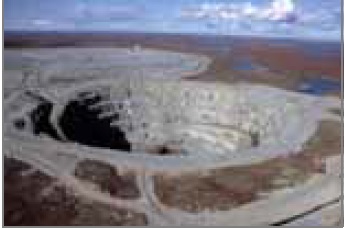Using diamond films to enhance thermal performance in electronics packaging
IEEE Electronics Packaging Chapter, Santa Clara Valley Chapter, USA, recently organized a seminar on using diamond films to enhance thermal performance in electronics packaging.
Artificial diamond films are deposited from a mixture of methane and hydrogen — and the deposition of the material is not an expensive process. However, the integration of diamond films and electronic devices requires the development and optimization of new processing lines, which is a costly procedure. LEDs, for instance, have become low-cost components.
Dr. Joana Catarina Mendes, Researcher at the Instituto de Telecomunicações in Portugal said a diamond is metastable allotrope of carbon, where carbon atoms are arranged in a variation of the face‐centered cubic crystal structure known as diamond lattice. It has small atomic radius, extremely strong covalent bonding between sp3 hybrid orbitals, and set of extreme properties. Some properties include high hardness, high demand inertness, high young modules, high thermal conductivity, high bandgap/breakdown field, high electron mobility, and low dielectric constant.

Natural diamond forms 150-200 km inside the earth’s mantle under extreme conditions. Despite their high commercial value in jewelry, natural diamond crystals have too many defects, and cannot be used for electronic applications. Their use is typically limited to tri-bological apps.
Diamond synthesis
Artificial diamond can be formed under high pressure and high temperature (HPHT). The HPHT method reproduces diamond formation conditions inside the earth’s mantle. Diamond seeds are placed at the bottom of a press at 5 GPa. The internal part of the press is heated above 1400°C, and melts the solvent metal. The molten metal dissolves and drags atoms from high purity carbon source, which precipitate on the diamond seed.
Another method is chemical vapor deposition (CVD). CH4 and H2 are typical input gases. The input gases are dissociated and activated. The activated radicals flow and react with C atoms on a substrate. Atomic H etches away non‐sp3 C bonds. Due to their short wavelength (12 cm at 2.45 GHz) the MW power can be supplied as TEM or TM waves. Conductive plasma replaces the outer conductor of coaxial line in plasma discharge region.
Single crystal diamond (SCD) substrate leads to homoepitaxial diamond films. They have the highest thermal conductivity. They are ideal for electronic devices and thermal management apps. Non‐diamond substrate leads to heteroepitaxial/polycrystalline diamond films (PCD). Here, different substrates are possible, such as Si, SiC, GaN, etc.
Diamond films enhance thermal performance in electronics packaging
We can use diamond films to enhance thermal performance in electronics packaging. We can start by integrating diamond and GaN high-electron-mobility transistors (HEMTs). In some cases, the amount of heat generated per unit volume is comparable in magnitude to that encountered at nuclear reactors and at the surface of the sun! We need to cool down the hotspot. We can also grow diamond on the back of GaN wafer.
Next, we have capping diamond, where, films are deposited at 700°C. Metal heat spreaders transfer the heat to the underlying HEMT holder. Thermal resistance is reduced by ≈ 40 percent, and junction temperature is lowered by 100°C @ 25 W/mm. 4’’ GaN‐on‐diamond wafer volume manufacturing was achieved in 2021. Radios and power amplifier modules are available for satellite apps.
Diamond substrate needs GaN/diamond wafer bonding. We can do thermocompression using adhesive layer, as well. We can also do surface-activated bonding (SAB). Another method is Van der Waals (VdW) bonding. The process was initially employed for GaAs thin films.

Other uses
Diamond can be used as chip‐carrier of power LEDs. We can also have diamond carriers for high power LED dice. Diamond can also be used as power board. Depending on the activation energy of the aging processes, LEDs mounted on diamond board will age 60-90 percent slower @350 mA and 90-99 percent @700 mA.
Conclusion
Diamond has been successfully used to improve the thermal management of different devices.
For GaN HEMTs, we have diamond‐capping of passivated HEMTs, direct growth of diamond on back of GaN wafers, bonding of GaN wafers/HEMTs and diamond substrates, commercial GaN‐on‐diamond‐based RF power amplifiers are available for satellite communications. Companies such as Mitsubishi Electric Corp. and Fujitsu are involved in research.
Diamond as chip‐carrier has similar impact of PCD and SCD carriers on LED characteristics. It improves stability of the wavelength with the current, and increases LED lifetime significantly. Diamond as power board increases LED lifetime considerably, when compared to standard MCPCBs. The results can be extrapolated to other devices.
